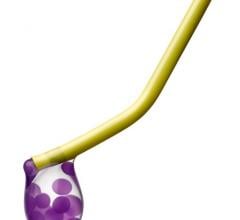March 25, 2008 - St. Jude Children’s Research Hospital physicians have demonstrated that children with bilateral Wilms tumor, a cancer of the kidneys, can retain normal function in both kidneys by undergoing a procedure called bilateral nephron-sparing surgery, even when preoperative scans suggest that the tumors are inoperable, said the hospital.
Between 1999 and 2006, all St. Jude patients with bilateral Wilms tumor exhibiting favorable histology (cell characteristics) underwent bilateral nephron-sparing surgeries, or partial nephrectomies. Nephron-sparing surgery is designed to remove the malignant tumor, sparing as much healthy kidney tissue as possible. In all 10 instances where the procedure was used, the surgery was reportedly successful, often despite preoperative imaging studies suggesting that kidney preservation might not be possible.
“Many times, physicians will look at a child’s scans and assume that it is impossible to remove the tumor while preserving some uninvolved kidney, but our study indicates that surgeons should not rely solely on the imaging to make that decision,” said Andrew Davidoff, M.D., division chief of St. Jude General Pediatric Surgery and the senior author of a retrospective study that appears in the advance online publication of the journal “Cancer.”
Traditionally, patients with bilateral Wilms tumor have one- and sometimes both- kidneys removed in an attempt to eradicate the cancer. If one kidney is removed and the cancer recurs in the other kidney, the possibility of losing renal function is high. If both kidneys are removed, the child must endure dialysis and a possible kidney transplant.
“In most cases, the surgeon will be able to save normal kidney on both sides,” Davidoff said. “The study indicates that, when combined with chemotherapy and radiation therapy, this surgical approach provides an opportunity to preserve renal function while maintaining a high probability of cure.”
Other authors include Jesse J. Jenkins and Matthew J. Krasin (St. Jude); Mark A. Williams and Deborah P. Jones (St. Jude and University of Tennessee, Memphis); Dana W. Giel (University of Tennessee, Memphis); Fredric A. Hoffer (University of Washington, formerly of St. Jude); and Jeffrey S. Dome (Children’s National Medical Center, formerly of St. Jude and the University of Tennessee, Memphis).
For more information: www.stjude.org


 September 07, 2023
September 07, 2023 






